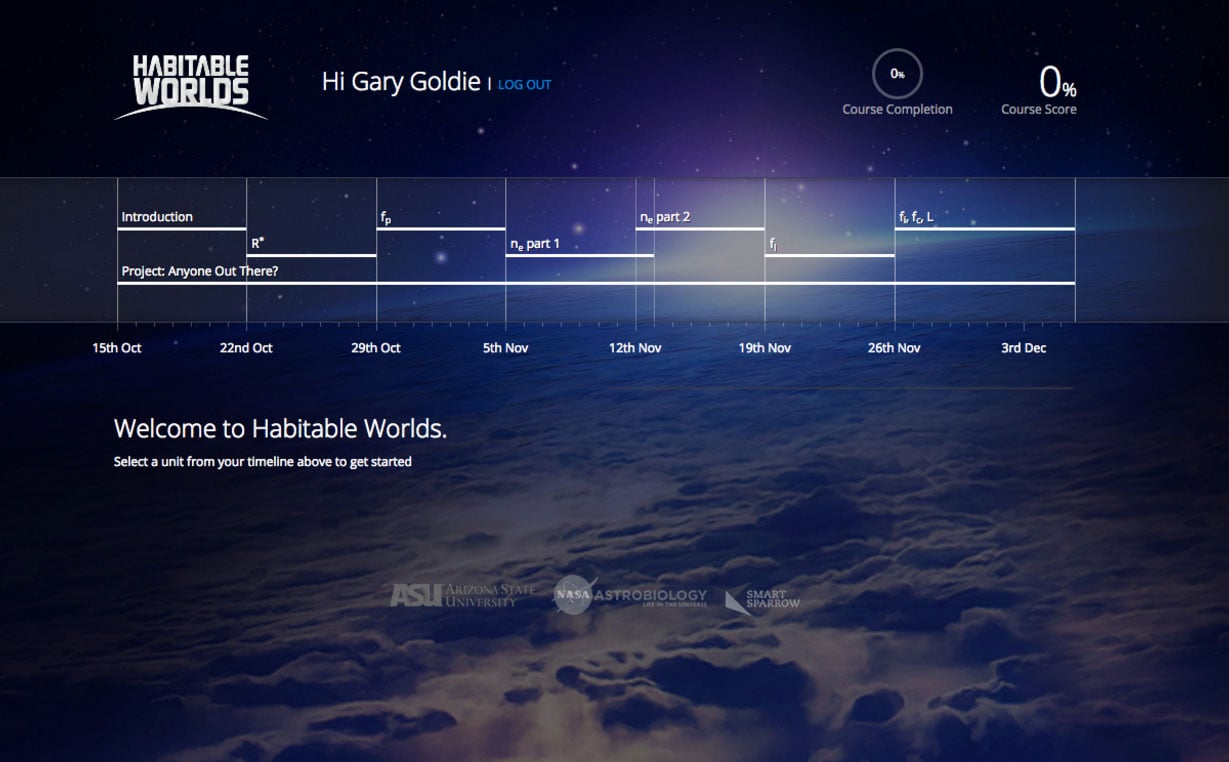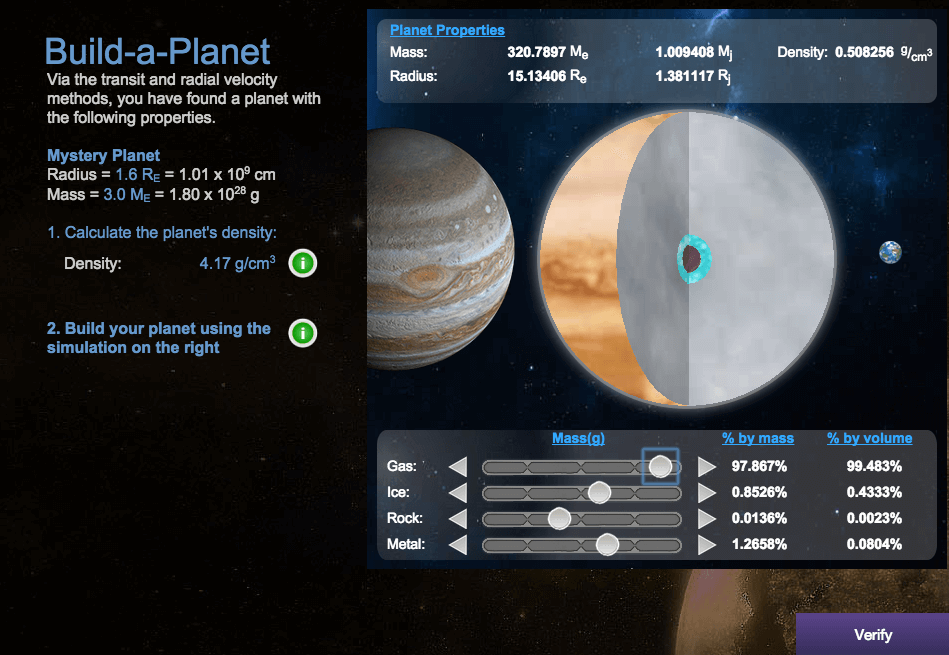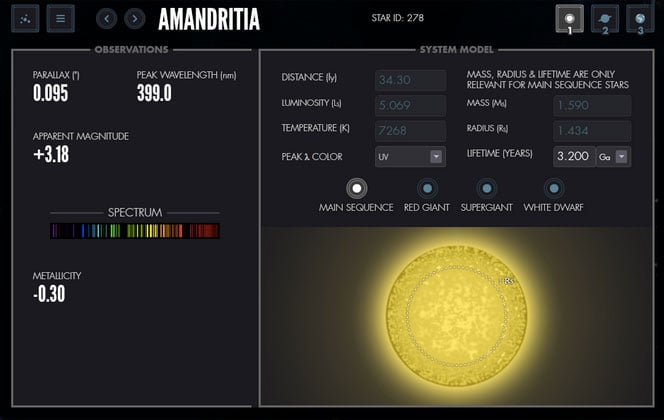Intro
In 2011, Arizona State University (ASU) astrobiologist Ariel Anbar launched the university’s flagship “smart course” in science — Habitable Worlds. Professor Anbar and ASU learning designer Lev Horodyskj used the Smart Sparrow platform to create an introductory science course designed for students—particularly non-science majors—to apply their knowledge in a project-based manner, using logic and reasoning to solve problems. Habitable Worlds uses immersive, interactive activities that engage students and help them understand the science behind the compelling question of whether we are alone in the universe. Today, more than 2,000 ASU students have taken Habitable Worlds, and many have reported that the course was more challenging than expected, but also much more enjoyable.
Challenge
Shortly after Prof. Anbar arrived to ASU to teach introductory chemistry to a class of 200 students, he began thinking about new ways to deliver science education other than through a traditional, disciplinary lecture-lab course. Historically, a major difficulty with engaging students in STEM is that science is too often taught as an encyclopedic collection of settled facts to be mastered. However, to Anbar, science is all about problem solving, motivated by big questions that cut across disciplines—something that cannot easily be taught through the lecture mode at scale. Although laboratory supplements to such courses offer the potential for teaching through question-motivated problem-solving, this is difficult to accomplish at scale. Also, traditional technologies on campus were not suited to support a new personalized learning approach.

Solution
Prof. Anbar and Lev Horodyskyj met these challenges by creating an interactive, game-like science course for non-science majors that required using logic and reasoning to solve problems centered on the question “are we alone?”. In doing so, students get a better understanding of both the power and limitations of science.

Using the Smart Sparrow platform, Anbar and Horodyskj were able to design what is now known as Habitable Worlds. The authoring tool gave them the ability to easily design and make adjustments to the courseware on their own, giving them full pedagogical control over the course. Other cutting-edge technologies, such as simulations would bring these scientific concepts to life, creating graphically rich, scientifically accurate, interactive environments called Virtual Field Trips. The simulations were embedded into the Smart Sparrow platform, allowing for interactivity and adaptivity during the student experience.
Students’ task throughout the course of the semester is to determine how many planets within that field might host habitable life. To figure this out, they use the Drake equation, and other concepts that cover the basics of biology, chemistry and physics.
Through the interactive simulations, students perform virtual explorations and experiments while the system adapts instruction to them. The online exercises, supplemented by video tutorials, are the centerpiece of the class.

Smart Sparrow's technology and passion made this course possible. They go beyond the call of duty to come up with amazing concepts and code that let us bring our ideas to life. They are dedicated not only to their technology but also to getting the science right. They understand where science education is headed and are helping us get there with style. It's one small step for a class, but the beginning of a giant leap for science education.
Results
Habitable Worlds delivers over 100 hours of digital, next-generation learning experiences, across 60+ adaptive lessons, where students engage with 20+ beautifully designed, scientifically accurate simulations. The course has now been offered to over 1,500 students and is being expanded as an online course that faculty outside of ASU can adapt and teach to their own students. For more info about Inpsark visit www.inspark.education.

In addition, the course played a major influence in the establishment of the Inspark Science Network which, drawing on the principles of Habitable Worlds, is part of a project of scaling next-generation science courseware to hundreds of thousands of students. The initiative is being funded through a $4.5 million grant awarded to Smart Sparrow, from the Bill and Melinda Gates Foundation.
Anbar now also directs ASU’s newly established Center for Education Through Exploration (ETX), an initiative designed to develop and extend the idea behind Habitable Worlds. The ETX Center will develop, deploy and research digital platforms that help teach science as the means to explore the unknown, rather than simply learning what is already known, and do so at scale.
Quote from Lev
“The Smart Sparrow Platform was really eye-opening because it allowed so many more possibilities. It was literally a blank canvas where I could put whatever I wanted.”
Some student feedback
I think that the course’s “outside the box” usage of the simulation tool was beneficial and exciting to learn from. The material covered helped me learn more in the semester than any book could.
I learned so much in this course. I had to actively learn throughout the whole course and be completely engaged. It was a difficult course, but I stood up and danced in a Starbucks when I found a habitable world for the final project. This class was very rewarding. It was also fun to talk to my friend about the content of the course because they thought I was genius and really I was just using terms that I had learned. It has been really fun taking this course.
The views expressed are personal and do not represent the position of Arizona State University or the Arizona Board of Regents.


